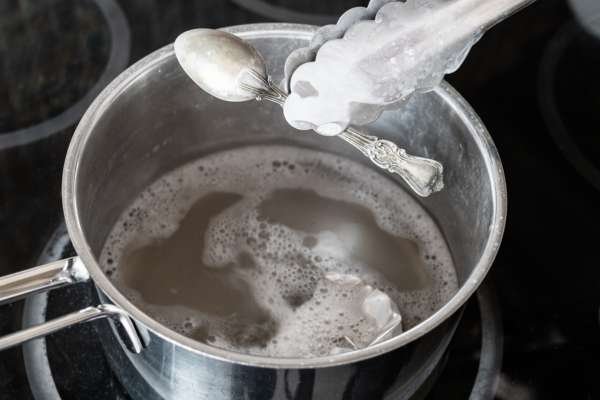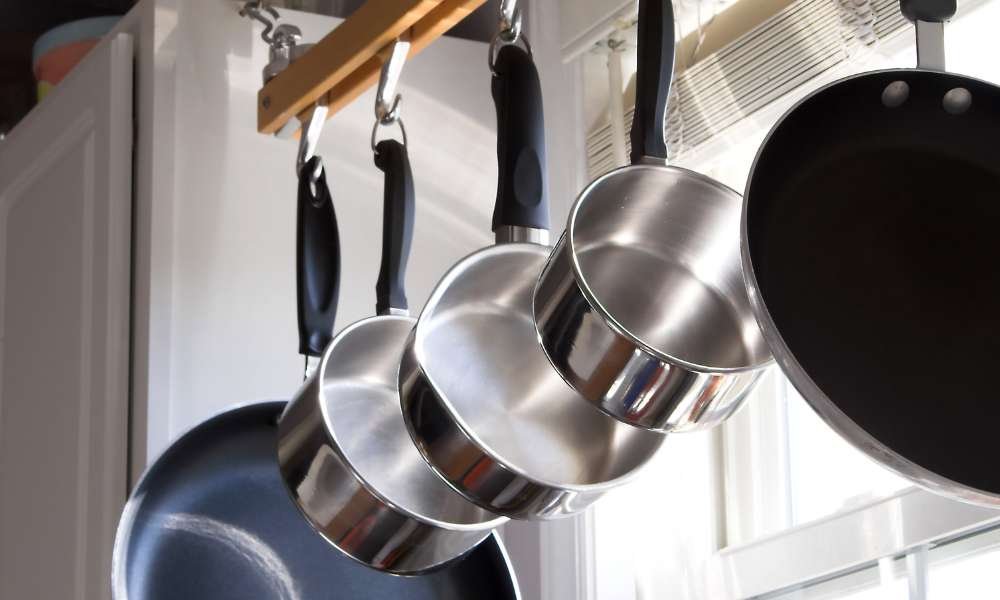Discover the secret to revitalizing your cherished cookware with our definitive guide on remove rust from pots and pans. Rust, the unsightly byproduct of moisture and oxygen exposure, not only compromises the aesthetic appeal of your kitchen essentials but also their performance and longevity. In this article, we unveil expert-approved, simple yet effective strategies to remove rust from pots and pansand restore the pristine condition of your cookware, ensuring it remains a valuable ally in your culinary adventures.
Understanding Rust
Rust, scientifically known as iron oxide, occurs through a chemical reaction between iron, oxygen, and moisture. This reaction is not only common in nature but also a frequent unwelcome visitor on our cookware, particularly those made from iron or steel. The process, known as oxidation, gradually degrades the metal, leaving behind a reddish-brown flaky coating that is both unattractive and harmful to the cookware’s functionality. Cookware most susceptible to rust includes cast iron pans, steel pots, and any metal items that have been scratched or damaged, exposing the underlying metal to air and moisture.
Preventative Measures remove rust from pots and pans

The proverb that prevention is better than cure aptly applies to combating rust. To ensure rust doesn’t compromise your cookware, consider these essential preventative tactics:
- Thorough Drying: Immediately after washing, make sure to completely dry your pots and pans. Leaving them damp is an invitation to rust, so either towel-dry them or let them air dry on a rack in an area with good airflow.
- Proper Storage: Keep your cookware in a place that’s both dry and cool. Wet cookware should never be stacked together, as this can trap moisture between them, fostering an environment where rust thrives.
- Seasoning Cast Iron: To safeguard cast iron cookware from rust, it’s crucial to season it. This involves lightly coating it with an oil that has a high smoke point and then baking it. This procedure not only prevents rust but also enhances the cookware’s non-stick properties.
Rust Removal Methods
Each method will be detailed with step-by-step instructions, required materials, and safety tips.
Method 1: Vinegar Soak

Revive your rust-afflicted cookware with a simple, eco-friendly vinegar soak. This natural method leverages the acidic properties of white vinegar to dissolve rust with minimal effort. Submerge your tarnished pots and pans in a solution of equal parts water and vinegar, allowing them to soak overnight. The acidic bath breaks down the rust, making it easy to scrub away with a brush, revealing the original shine of your cookware. Rinse thoroughly and dry to prevent future rust.
Method 2: Baking Soda Paste remove rust from pots and pans
For a gentle yet effective rust removal solution, turn to the pantry staple: baking soda. Create a thick paste by mixing baking soda with water and apply it directly to the rusted areas of your cookware. The natural abrasive properties of baking soda work to loosen and lift the rust when left to sit for an hour. Afterward, a simple scrub with a pad removes the rust, restoring your pots and pans to their former glory. Rinse well and dry immediately to keep rust at bay.
Method 3: Potato and Dish Soap

Harness the surprising power of a potato in combating rust from your cookware. The oxalic acid in potatoes naturally breaks down rust. Slice a potato in half, dab it in dish soap, and sprinkle some salt for added abrasiveness. Rub the cut side over the rust-stained areas. This method not only loosens the rust but is also safe and environmentally friendly. After scrubbing, rinse your pots and pans thoroughly and dry them to unveil a rust-free surface.
Method 4: Lemon and Salt remove rust from pots and pans
Harness the power of nature with a lemon and salt treatment to effortlessly remove rust from your cookware. The citric acid in lemon juice acts as a natural rust dissolver when combined with the abrasive properties of salt. Sprinkle salt generously over the rusted area, then apply lemon juice. Let the mixture sit for a few hours to penetrate and loosen the rust. Scrubbing the area afterward will lift the rust off, restoring your pots and pans to their former glory. Rinse well and dry immediately to seal the deal.
Method 5: Commercial Rust Removers

For stubborn rust that home remedies can’t tackle, commercial rust removers offer a potent solution. These specially formulated products are designed to effortlessly dissolve rust, saving time and elbow grease. When selecting a commercial rust remover, opt for one that is safe for use on cookware, following the manufacturer’s instructions closely. Apply the remover, let it work its magic, then rinse and dry your pots and pans thoroughly to reveal a rust-free surface, ready for cooking once more.
Caring for Restored Cookware

After successfully banishing rust from your pots and pans, maintaining their restored condition is crucial for ensuring their longevity and performance. Begin by thoroughly drying your cookware after each wash to prevent rust from reappearing. For cast iron pieces, regular seasoning is essential; coat them lightly with cooking oil and heat them in the oven to reinforce their protective layer. Store your cookware in a dry, ventilated area to ward off moisture. Additionally, avoid using metal utensils that can scratch and damage the surface, making it more susceptible to rust. Embrace these care practices to keep your cookware in pristine condition, enhancing your culinary endeavors and preserving the quality of your tools for years to come.
Conclusion
Removing rust from pots and pans is a straightforward process with the right approach. Whether you opt for natural remedies like vinegar and baking soda or commercial rust removers, the key is consistent care and maintenance. By following these methods, you can extend the life of your cookware and keep it looking its best, ensuring that it remains a valuable asset in your culinary creations.



